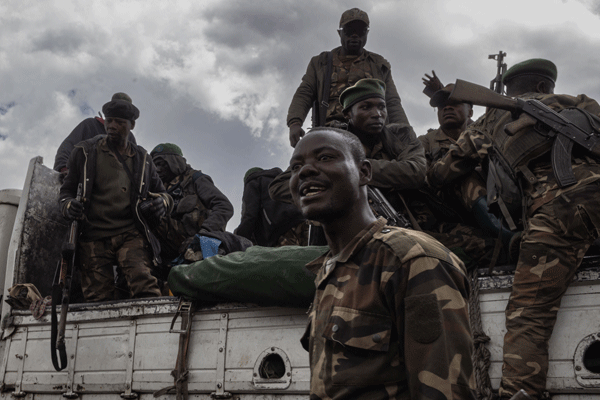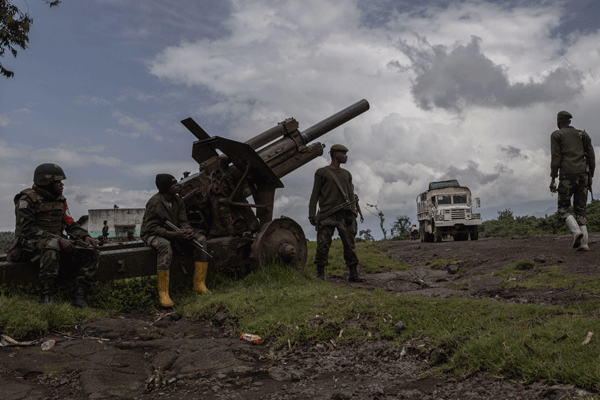Prime
Once again, we have the M23 resurrected and given new life

Author: Asuman Bisiika. PHOTO/FILE
What you need to know:
Whoever resurrected M23 may have thought of other objectives but is likely to get unintended consequences.
At 11pm on Monday, November 19 2012, I received a phone text message from a friend in Kinshasa: ‘Goma va tombe, tout les soldats ont fui (Goma has fallen, all the soldiers have fled)’.
The next morning, a column of M23 rebels marched on Goma City and took it without any resistance from FARDC (government forces). The timing of taking Goma was very opportune (and tempting too). The international community and their pliant so-called international media had shifted their attention from the Syrian civil war to the Israel bombing of Gaza. In addition to that, the regional leadership was supposed to be pre-occupied with a Comesa Summit in Kampala.
******************
Dear reader, I wrote the above in 2012. About 10 years and several peaceful engagements later, this seems to have been written last week. Once again, we have the M23 resurrected and given new life.
There are minerals, Rwanda, genocide, Tutsi, Rwandaphone etc in the mix. However, contrary to the common tagging of mineral-rich, Kivu (both Sud and Nord) is actually not very much mineral-endowed (in comparison to other DRC provinces like Katanga and Kasai.
Goma was actually established as a summer town (some kind of retreat) for the predominantly Greek miners in Maniema Province. The architectural rendering of houses on Lake Kivu’s waterfront is a testimony to the town’s holiday theme. In fact Kivu (Sud and Nord) was more known for its expansive plantation and mixed farms than the minerals that are touted these days.
And most of these farming concerns were, like the mining concessions in Maniema Province, still predominantly owned by Greeks. Before their destruction in 1994, the cattle rearing farms in Masisi, favourably compared with commercial farms in Kenya or South Africa. They exported cheese to Europe.
Whereas M23 are associated with tags like Tutsis, Banyamulenge, Rwandaphone (Kinyarwanda speaking communities in eastern DRC), minerals, Rwanda etc, these taglines are really misplaced. There are no Banyamulenge in the top command and control of the M23 (which is a predominantly an affair of the Banyajomba Community).
Even the portrayal of M23 as predominantly Tutsi is misplaced. Mr Bertrand Bisimwa, the M23 chairman is a Mushi (a minority community among the Rwandaphones), Commander Kazaramo is Hutu from Jomba. Commander Sultan Makenga (M23’s supreme military leader) is said to be a Tutsi from the Bagogwe community. Some other M23 leaders are not even Rwandaphone.
Even if they have good intentions, the M23 has totally failed to frame themselves as a nationalist movement. Their agenda seems to enjoy proximity to Rwanda’s interests in the DRC than the nationalist call to Kinshasa. The continued portray of a Rwandaphone identity and interests (and alleged association with Rwanda) is so disabling for them.
Whoever resurrected M23 may have thought of other objectives but is likely to get unintended consequences. The Congolese response was very round and unequivocal.
The attack on Congolese and UN military forces has improved President Tshisekedi’s potential to win next year’s election. He will now portray himself as the guy who stood up to the bully from the east. This tough talking associated with Kinshasa (and the protest demos) is a well-choreographed image-builder for Tshisekedi gearing for the December 2023 national elections.
There was a recent well-attended meeting of national leaders from Katanga Province. Former president Joseph Kabila and Moise Katumbi were in attendance. Photos of the two enjoying light moments were circulated.
When President Tshisekedi was still grappling with what to do with a united Katanga Province, someone handed him an opportunity: a very unpopular M23 action against which he (Tshisekedi) is now rallying ekolo (the nation). Once again, who resurrected M23?
Mr Bisiika is the executive editor of the East African Flagpost. [email protected]




